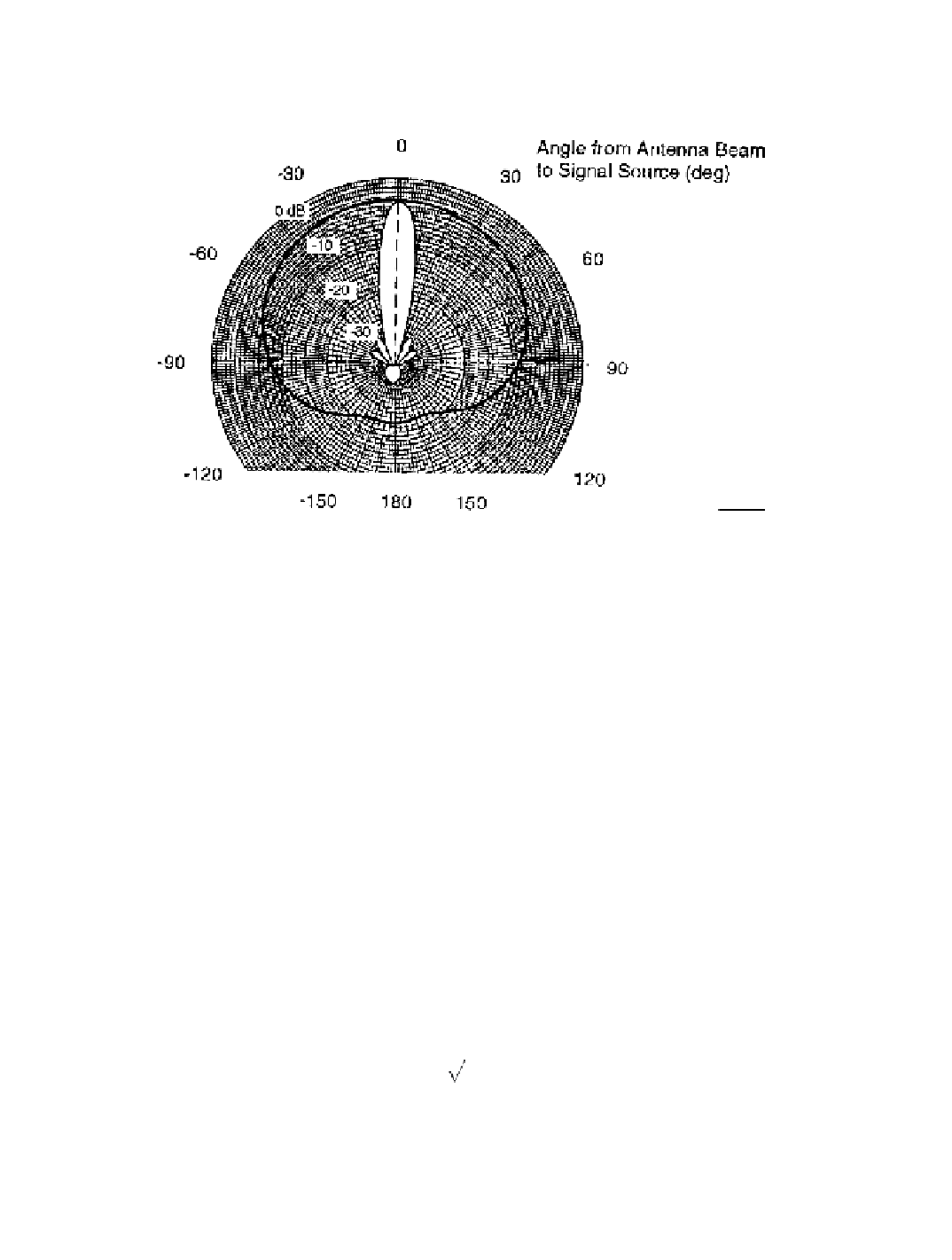Environmental Engineering Reference
In-Depth Information
zone interference need be considered, with the wind turbine located between the microwave
transmitter and the receiver.
Figure 9-23. Comparison of typical azimuthal response factors for a microwave receiv-
ing antenna (white area) and a directional TV antenna (solid line).
The microwave
antenna dish is of the horn-reflector type, and the TV antenna response is the same as that in
Figure 9-2.
Satellite Microwave Link
The potential impact of a wind turbine on the performance of an earth station receiving
microwave signals in the 6 to 11 Ghz frequency range from a
geostationary satellite
can
be estimated from the ratio of the scattered-to-desired signal amplitudes at the receiver.
This ratio can be determined in a manner similar to that described for a terrestrial
microwave link, with knowledge of the azimuthal and elevation response patterns of the
receiving station's dish antennas. A modulation index threshold is not commonly specified
for satellite microwave systems, but a value of -40 Db has been used for
m
R
to estimate the
significance of interference signals at an earth station.
Potential interference with an earth station communicating with a geostationary satellite
can also be assessed by using the Fresnel distance criterion given in Equations (9-33). In
this case
x
AB
=
¥, and the clearance criterion reduces to
y
= 3 lz
A
(9-34)
min


Search WWH ::

Custom Search